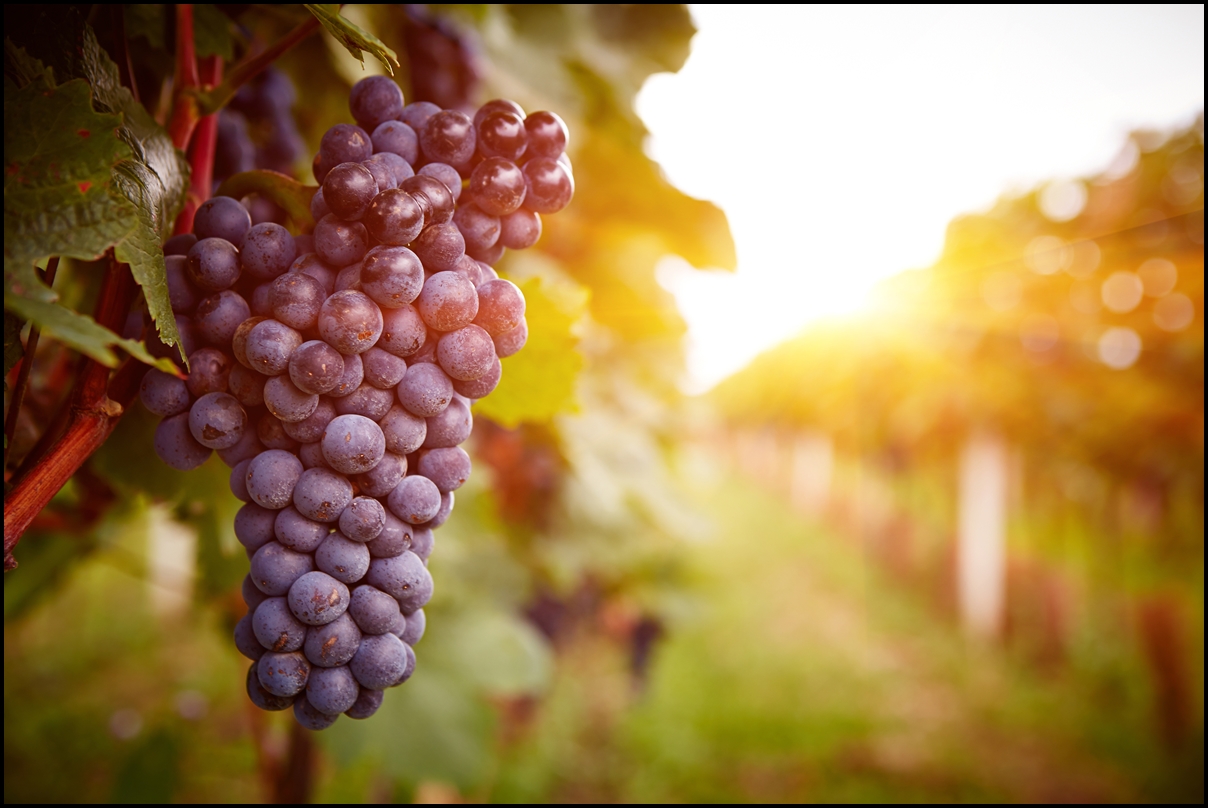
Making wine starts with grapes and most importantly, ripe grapes. The secret of the grower is to bring the grapes to their ultimate peak of ripeness, given their local weather and geography. The trick is to pick them as ripe as possible before colder weather or storms that can ruin a harvest arrive. This means the grapes have the most sugar possible and that’s what the winemaker needs to produce a great wine.
Grapes need sun to ripen, which means most grapes are grown closer to the equator on the southern and northern hemispheres. But you don’t want to be too close. The ideal spot is somewhere between the 30 and 50th latitude. When you’re closer to the equator, like southern France, you get riper grapes with more sugar content. When you’re further away, like northern Germany, that means less ripeness and fewer sugars in the grapes. The grape grower will measure the sugar content using an optical tool called a refractometer that measures the juice and tells the Brix, which roughly translates to the percent of sugar in the juice.
Sugar is important because during fermentation, the yeast turns sugar into alcohol. The more sugar there is for the yeast to process, the higher the alcohol. Two sugar molecules are used to make one alcohol molecule. That means grapes with 26% sugar will yield a 13% alcohol wine, if all the sugar is processed, which it is in typical dry wines. This is why most wines, on average, have about 12-15% alcohol. Without it, we’d just be drinking fancy grape juice.
But that 13% is just an average. In some wines, the winemaker will stop the fermentation earlier, not using all the sugar in the juice they have collected. This means that the alcohol content will be lower. German Rieslings use this approach to make some of their sweeter versions. The technical term for this is residual sugar – or RS if you want to be hip (or a wine geek).
The other factor to consider is the body of the wine. We can see the body of a wine when we swirl our glass and watch the tears slide down the side of the glass. When the tears run quickly down, the wine is lighter body. Thick, slow tears indicate a heavier body wine. What causes body? Alcohol and residual sugar. Some wines have a lot of body because they have lots of alcohol, perhaps 14% or higher. Other wines have body due to a lower alcohol content, but a fair dose of residual sugar. You won’t know which one until you taste it.
So why would a wine maker grow anywhere but closer to the equator, to ensure they get maximum ripeness? The answer is acid. We’ve all tasted a fruit when it is under ripe and know that pucker factor we get. This acid can be a desirable factor in many wines, like crisp whites or reds that can pair wonderfully with food. Wine makers make the best use of the grapes they can grow, giving the drinker a balance between alcohol, residual sugar, body and acid.
The next time you drink some of your favorite wine, think about the grapes, how ripe then must have been and where they were grown to get the alcohol level and the acid you experience.
Cheers!

